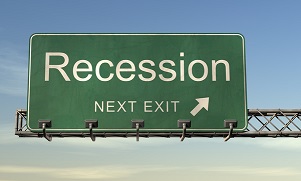Market Watch: Why Falling Stock Prices Could Lead to a Long, Deep Recession

Article by Martin Feldstein on WSJ Market Watch
The Standard and Poor’s 500 index of share prices has fluctuated wildly during 2018 but has returned to nearly the same level that it was at the beginning of the year.
The price/earnings (P/E) ratio is now 40% higher than its historic average. Its rise reflects the very low interest rates that have prevailed since the Federal Reserve cut the federal funds interest rate to near zero in 2008. As long-term interest rates rise, however, share prices will be less attractive to investors and will decline.
A key sign of this is that the yield on 10-year Treasury bonds has doubled in the past two years. But, at a little over 3%, it is still barely above the rate of inflation, which averaged 2.9% over the past 12 months. Three forces will cause the long-term interest rate to continue to rise.
• First, the Fed is raising the short-term federal funds rate and projects that it will increase from a little over 2% to about 3.5% by the end of 2020.
• Second, the very large projected budget deficits will cause long-term rates to rise in order to induce investors to absorb the increased volume of government debt. According to the Congressional Budget Office, the volume of publicly held debt will rise from about $15 trillion now to nearly $30 trillion by the end of the decade.
• Third, the very low and falling rate of unemployment will cause inflation to accelerate. Investors will demand higher yields on bonds to compensate for the resulting loss of purchasing power.
It would not be surprising if the rate on 10-year Treasury bonds rises to 5% or more over the next few years. With an inflation rate of 3%, the real yield will be back to a normal historic level of over 2%.
This normalization of the 10-year interest rate could cause the P/E ratio to return to its historical benchmark. A decline of that magnitude, from its current level of 40% above the historic average, would cause household wealth to shrink by about $8 trillion.
The historic relationship between household wealth and consumer spending implies that the annual level of household consumption would decline by about 1.5% of gross domestic product. That fall in household demand, and the induced decline in business investment, would push the U.S. economy into recession.
Most recessions in the United States have been relatively short and shallow, with durations of less than a year between the beginning of the downturn and the date when the recovery begins. The recession that began in 2007 was much longer and deeper because of the collapse of financial institutions. The faster and more robust recoveries that characterized most previous recessions reflected aggressive countercyclical monetary policy by the Fed, which cut the short-term interest rate very sharply.
But if a recession begins as soon as 2020, the Fed will not be in a position to reduce the federal funds rate significantly. Indeed, the Fed now projects the federal funds rate at the end of 2020 to be less than 3.5%. In that case, monetary policy would be unable to combat an economic downturn.
The alternative is to rely on fiscal stimulus, achieved by cutting taxes or increasing spending. But with annual budget deficits of $1 trillion and government debt heading toward 100% of GDP, a stimulus package would be politically difficult to enact.
As a result, the next economic downturn is likely to be deeper and longer than would otherwise be the case. If the government at that time chooses to use fiscal policy, the future debt-to-GDP ratio will rise further above 100% of GDP, forcing long-term interest rates even higher. It is not an attractive outlook.
To read this article on Wall Street Journal Market Watch, click here